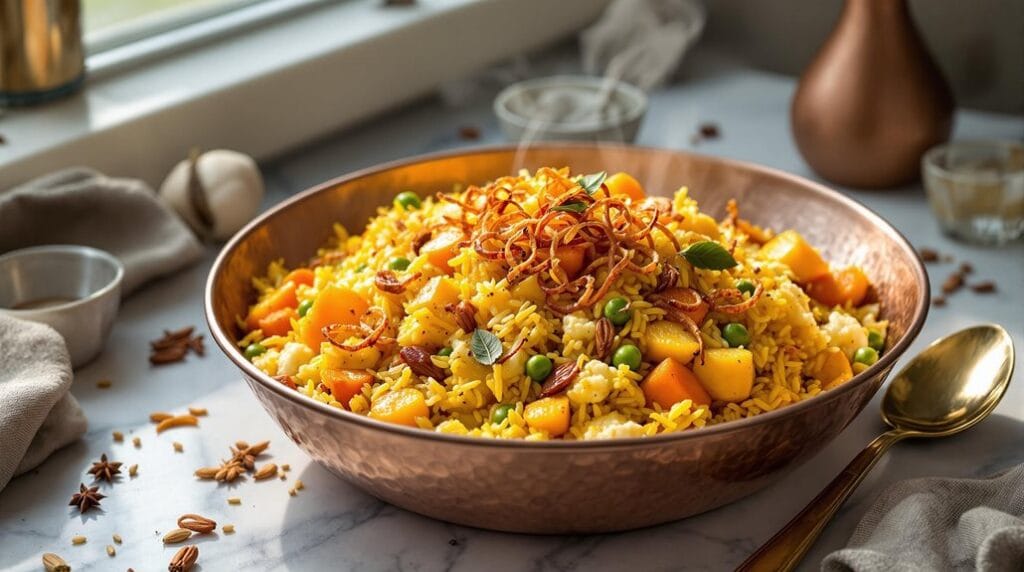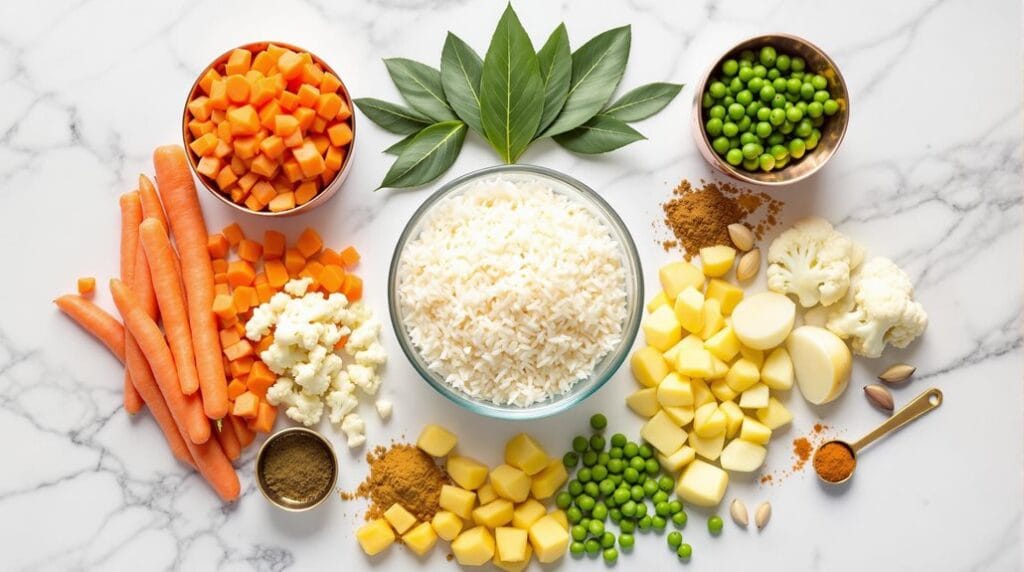Servings 4
- Amount Per Serving
- % Daily Value *
- Total Fat 12.33g19%
- Saturated Fat 1.24g7%
- Trans Fat 0.08g
- Sodium 1662.25mg70%
- Potassium 1349mg39%
- Total Carbohydrate 117.9g40%
- Dietary Fiber 11.4g46%
- Sugars 9.84g
- Protein 15.02g31%
- Vitamin A 278.06 IU
- Vitamin C 115.05 mg
- Calcium 141.69 mg
- Iron 7.11 mg
- Vitamin E 2.84 IU
- Vitamin K 41.86 mcg
- Thiamin 0.84 mg
- Riboflavin 0.26 mg
- Niacin 7.04 mg
- Vitamin B6 0.96 mg
- Folate 150.41 mcg
- Phosphorus 310.14 mg
- Magnesium 102.18 mg
- Zinc 2.51 mg
* Percent Daily Values are based on a 2,000 calorie diet. Your daily value may be higher or lower depending on your calorie needs.
Note
Tips: For extra flavour, soak the rice for 30 minutes before cooking and add a pinch of saffron to the stock. If vegetables are cut larger, they may need an extra 2-3 minutes of cooking time. To prevent the rice from becoming too wet, make sure the rice is well-drained after rinsing. For a crispier top layer, increase the temperature to 220°C/425°F for the final 2 minutes of cooking.
Spiced Rice Comfort Food
Ninja Speedi's vegetable biryani delivers the ultimate comfort food experience, transforming simple rice and vegetables into a soul-warming feast. You'll find that each grain of rice absorbs the aromatic spices while staying perfectly separate, creating that authentic biryani texture you crave. The layers of flavour build with every bite, from earthy cumin to warming cardamom, making this dish a true celebration of Indian cuisine.
When you're having a rough day, there's something incredibly satisfying about digging into a steaming bowl of perfectly spiced rice. The beauty of making it in your Ninja Speedi is that you'll get that traditional slow-cooked taste in a fraction of the time.
The vegetables become tender but not mushy, while the rice develops those coveted crispy bottom bits that everyone fights over (you know the ones!). Plus, you're getting a complete meal that's both nutritious and deeply satisfying.
Whether you're cooking for yourself or sharing with family, this biryani hits all the right notes - it's filling without being heavy, complex without being complicated, and comforting without being bland.
Conclusion
You'll find that this modernised take on vegetable biryani brings royal Persian cuisine right to your kitchen counter. With your Ninja Speedi, you're transforming simple ingredients into a majestic one-pot feast that's both convenient and authentic. The crispy onions aren't just a garnish - they're your crowning touch, connecting you to centuries of culinary tradition while keeping things deliciously practical for today's busy home cook.
Did you make this recipe?
Follow @easyrecipes.pro on Instagram for more recipes.
Pin this recipe to share with your friends and followers.



